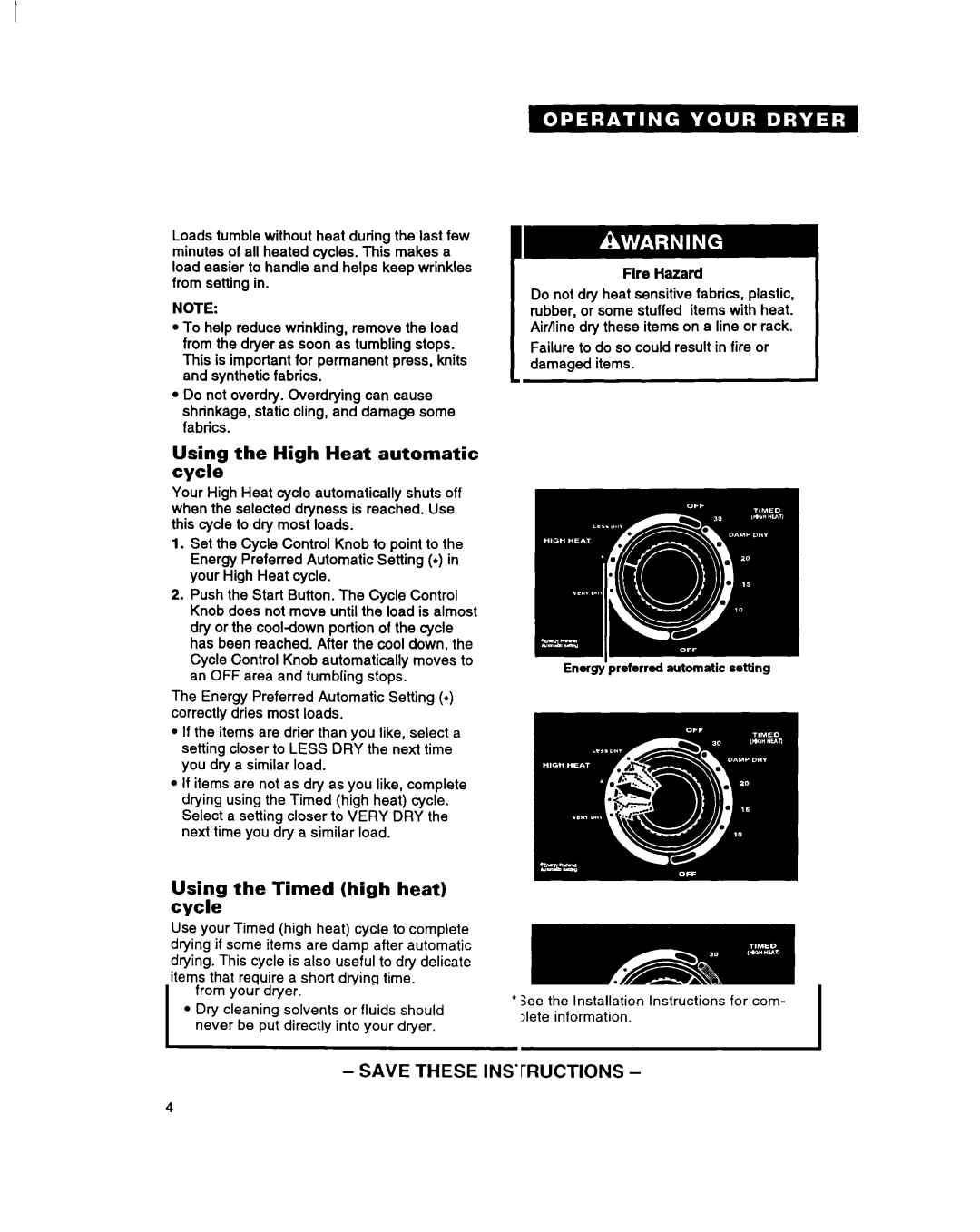
Loads tumble without heat during the last few minutes of all heated cycles. This makes a load easier to handle and helps keep wrinkles from setting in.
NOTE:
l To help reduce wrinkling, remove the load from the dryer as soon as tumbling stops. This is important for permanent press, knits and synthetic fabrics.
l Do not overdry. Overdrying can cause shrinkage, static cling, and damage some fabrics.
Using the High Heat automatic cycle
Your High Heat cycle automatically shuts off when the selected dryness is reached. Use this cycle to dry most loads.
1.Set the Cycle Control Knob to point to the Energy Preferred Automatic Setting (a) in your High Heat cycle.
2.Push the Start Button. The Cycle Control Knob does not move until the load is almost dry or the
The Energy Preferred Automatic Setting (e) correctly dries most loads.
l If the items are drier than you like, select a setting closer to LESS DRY the next time you dry a similar load.
l If items are not as dry as you like, complete drying using the Timed (high heat) cycle. Select a setting closer to VERY DRY the next time you dry a similar load.
Fire Hazard
Do not dry heat sensitive fabrics, plastic, rubber, or some stuffed items with heat. Air/line dry these items on a line or rack.
Failure to do so could result in fire or damaged items.
Energy’preferred automatic setting
Using the Timed (high heat) cycle
Use your Timed (high heat) cycle to complete drying if some items are damp after automatic drying. This cycle is also useful to dry delicate items that require a short drying time.
1.Turn the Cycle Control Knob to the number of minutes you want in the Timed (high heat) cycle.
2.Push the Start Button.
The last few minutes of this cycle are without heat to help make the load easier to handle.
Timed (high heat) cycle
7
